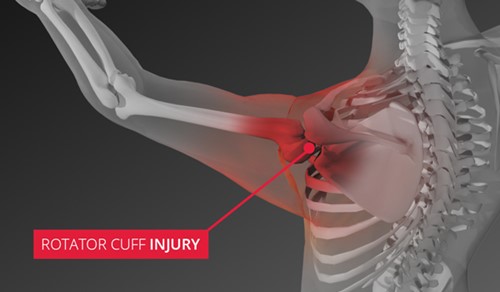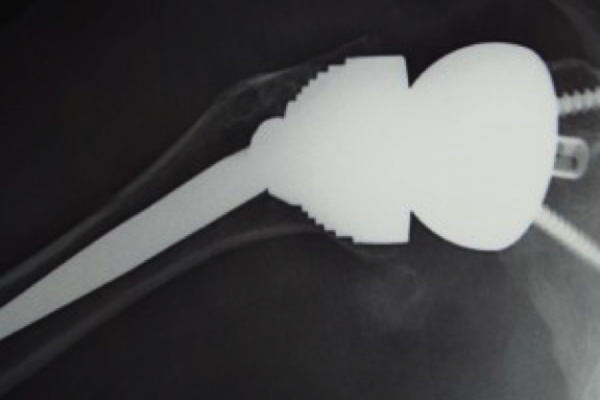Cuff Tear Arthropathy
There is a small group of patients who have very painful and very stiff shoulders who are told that nothing can be done for their shoulders.
These people are usually elderly but otherwise in a pretty good state of health and are active with their lives being ruined by their useless shoulder.
What they may have is a condition called Cuff Tear Arthropathy, and there is actually a very good way of dealing with this condition called a Reverse Geometry Shoulder Replacement.
This condition is usually a combination of severe rotator cuff damage (group of muscles surrounding the shoulder joint and holding the head of the upper arm within the shallow socket) and shoulder arthritis.
In these cases, the cuff has rubbed through, the ends have retracted, the muscle has wasted away and the tear is irreparable and there is also advanced arthritis in the shoulder.
This leads to loss of function which even a normal shoulder replacement would not restore as you need an intact rotator cuff to move the shoulder. The only way to resolve the pain is a new shoulder but this has to be done in a different way.
How does it start?
It can start with arthritis of the shoulder joint and then, later on, the tendons of the rotator cuff rub through. Or the other way round you have a big cuff tear (maybe after a fall) and then arthritis set in after. Occasionally both can happen together and that is often due to a systemic cause rather than a mechanical one.

If you have a very swollen shoulder which is not painful but very difficult to move you may have what they call a Senile Haemorrhagic Shoulder. This is where the destructive arthritis and the cuff degeneration occur at the same time and the shoulder becomes very inflammed with bleeding into the joint. This causes a lot of swelling and when drained eases the symptoms considerably while you decide on the next step.
How does the Reverse replacement work?
The main role of the rotator cuff in the joint is to hold the ball centrally into the socket to allow the larger shoulder muscles to work effectively. The larger muscles can not work effectively without the ball being held secure as an anchor.
In cases where there is too much damage to the rotator cuff a normal replacement would not solve the problem and so a ‘reverse’ geometry shoulder replacement will be performed.
This mean that a new ball is put in where the socket was and a new socket where the ball was (reverse geometry) and this swapped orientation and the shape of the components takes over the job of the rotator cuff and keeps the ball correctly in the socket. So, when the deltoid muscle contracts it can tighten up fully and move the arm whilst the ball stays where still.

What does the operation involve?
It is very similar to a standard shoulder replacement with a hospital stay of usually 1-3 nights
The operation takes about an hour and does not involve cutting through any important tendons as these are already damaged beyond repair. So access to the joint is quick and easy. And the new ball and socket will be put in place. You will then be put in a sling and back to the ward.
Recovery from the Operation
This is usually much faster than a normal replacement as you do not have to wait for any big tendons to heal.
You wear a sling for 4 weeks but can take it out after the first week to move it a bit.
You will be given physiotherapy to help get back the range of motion you have lost and to build up the muscles around the shoulder which will be very weak.
When can I drive again?
Ideally you should not drive while you are in a sling and it may be longer before your arm feels strong enough. So driving will be around the 8 week mark.
Rehabilitation
There will be plenty of work to do to get back the shoulder function and many of the exercises will be done more easily in water- see Hydro exercises for shoulder
Shoulder Exercises in water-Hydrotherapy
This type of shoulder replacement will not really allow you to play tennis or do upper body weight training, but it will enable you to play bowls and lead a normal life.
It gives a dramatic improvement to what was a very painful and useless shoulder. The movement will never be as good as a normal replacement and may not last as long. This normally does not matter as these operations are rarely done in anyone under 80.
This operation is a great choice for anyone with a painful useless shoulder.

